|
Displaying items by tag: TEFAF
On Saturday, London’s Robilant + Voena sold one of the most expensive works so far noted at TEFAF, as Andy Warhol’s large-scale, 90 by 70 inch “Knives” from 1981-82, executed in synthetic polymer and silkscreen on canvas and blown up from a Polaroid taken by the artist, sold to a European collector in the region of the $3.2 million asking price.
Painted near the nadir of Warhol’s career, the group of three knives was sourced from a Bowery restaurant supply store and brought back to the artist’s studio to be arranged and photographed.
The Rijksmuseum has purchased a large canvas by the 17th-century painter Jan Asselijn at The European Fine Art Fair (TEFAF) in Maastricht. The painting shows the breach of the St. Anthony’s Dike (now the Zeeburger Dike) in Amsterdam, which resulted from the St. Peter’s Flood of 1651. The purchase was made possible with the support of the Scato Gockinga Fund / Rijksmuseum Fund, the Turing Foundation and an anonymous donor. To celebrate its 10-year role as a main sponsor of the Rijksmuseum, ING also contributed to the acquisition.
Jan Asselijn (c.1610-1652), who personally witnessed the flood in Amsterdam in 1651, recorded the breach of the dam in both a journalistic and a dramatic sense.
On Friday, March 13, 2015, the European Fine Art Fair (TEFAF) -- the most distinguished art and antiques show in the world -- will open to the public. Held in Maastricht, a picturesque medieval city in the southernmost part of the Netherlands, this year’s fair will feature 275 leading galleries from twenty countries.
In addition to the traditional areas of Old Master paintings and antique furniture, TEFAF presents a wide variety of modern and contemporary art, jewelry, and twentieth-century design, which is featured in a small yet mighty section titled TEFAF Design.
The Shaker Museum│Mount Lebanon will be featured in a new book, "Shaker: Function, Purity, Perfection," to accompany an all-Shaker exhibit at the prestigious European Fine Art Fair in Maastricht, The Netherlands in March. The exhibit is being organized by art dealer Philippe Ségalot and Paris furniture dealer François Laffanour. The accompanying book will be published this month by Assouline Publishing.
Mr. Ségalot spearheaded the project. Celebrated for his work in contemporary art, he first became interested in Shaker design and began collecting Shaker objects eight years ago. He approached the Museum earlier this year about borrowing collection items to add to the privately-owned objects to be exhibited at the Maastricht Fair, which runs from March 13 to 22, 2015, and enlisted the Museum’s help in producing the new companion book on Shaker furniture.
The European Fine Art Foundation (TEFAF) has announced the recipients of this year's Museum Restoration Fund, "Art Daily" reports. The Museum Kunstpalast Düsseldorf and the Wadsworth Atheneum Museum of Art, Hartford were awarded a combined €50,000 ($62,000) for the restoration of early works by Francisco de Zurbarán.
The Kunstpalast Düsseldorf's "St. Francis of Assisi in Meditation" (1639) is one of only five Zurbarán works in a public German institution. The Wadsworth Atheneum's "St. Serapion" (1628) is considered to be one of Zurbarán's best early works.
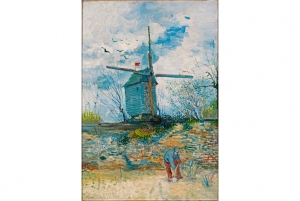
The 27th edition of The European Fine Art Fair (TEFAF) opened to the public on March 14 in Maastricht, the Netherlands. The show, which is widely regarded as the world’s leading art fair, brings together 275 of the finest art and antiques dealers from around the globe. Offerings include everything from Old Master paintings and antiquities to 20th century design and contemporary art.
This year’s show began with a V.I.P preview on Thursday, March 13, which saw a number of big-ticket sales. Galerie Odermatt-Vedovi (Paris) sold a mobile by Alexander Calder to a European collector for around $2.6 million and Van de Weghe Fine Art (New York) sold Pablo Picasso’s “Tete couronnee” in black crayon on paper to a Belgian collector for $485,000.
A number of important works are being offered at this year’s fair including Vincent van Gogh’s “Moulin de la Galette,” which will be exhibited by Dickinson (New York/London); a double portrait of Sir George Villiers and Lady Catherine Manners as Adonis and Venus by Sir Anthony van Dyck, which is being shown by David Koetser Gallery (Zurich); and three works by Damien Hirst, which are being offered by Tomasso Brothers Fine Art (London/Leeds).
TEFAF runs through March 23.
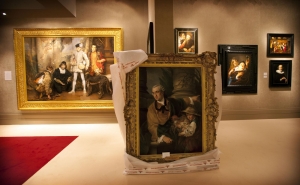
Back in March, officials in charge of the European Fine Art Fair (TEFAF) announced that they were talking with Sotheby’s about launching a high-end art and antiques fair in China. TEFAF, which takes place in Maastrich each year and is widely considered the finest art fair in the world, has just announced that TEFAF Beijing will not be taking place in 2014.
The fair was going to be a collaboration between TEFAF and Sotheby’s joint venture with China’s state-owned Beijing Gehua Cultural Development Group with Sotheby’s taking a percentage of sales from the fair. TEFAF released a statement saying that “a high-end art fair, as presently envisaged, in Beijing is not viable at the current time,” but many believe that dealers were not keen on giving a percentage of their sales to the auction house. In addition, most of TEFAF’s high-selling items such as old master paintings, antiquities, and fine antique furniture, are not in-demand among Chinese collectors.
TEFAF Maastricht will take place as planned from March 14, 2014 through March 23, 2014.
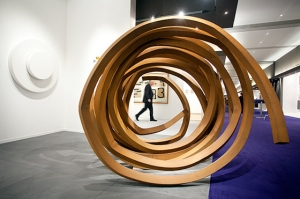
China’s art market experienced a substantial boom in 2011, bumping the United States out of its top spot and ultimately becoming the world’s principal market for art and antiques. In 2012, amid the uncertain global economy, China’s growth began to slow and its art and antiques market shrank by almost a quarter. This deceleration allowed the U.S. to regain its title as the world’s most significant art market.
The power shift was announced as part of the highly anticipated TEFAF Art Market Report compiled by Dr. Clare McAndrew. McAndrew, a cultural economist who specializes in the fine and decorative art market, is the founder of Arts Economics, a company commissioned by The European Fine Art Foundation to provide a yearly analysis of the worldwide art market. The report coincides with the beginning of TEFAF Maastricht, the Foundation’s annual art fair, which begins March 15, 2013 in the Netherlands and runs through March 24, 2013.
Slowing economic growth and a lack of high quality, high priced items on the market are to blame for China’s slip to the second most influential art market. While auction sales dropped by 30% in China, U.S. sale figures were up 5% to $18.4 billion. In 2012, buyers opted to minimize financial risk by buying works by well-known artists at the top end of the market with Post-War and Contemporary art performing the strongest.
Dr. McAndrew will present her findings at the TEFAF Art Symposium on Friday, March 15, 2013 in Maastricht.
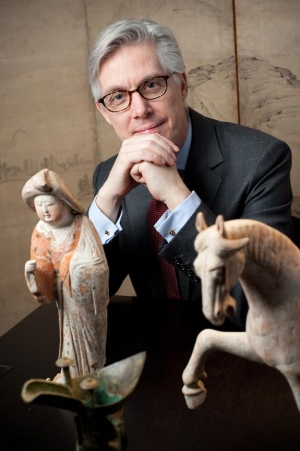
LONDON, ENGLAND – By now it is no secret that newly wealthy Chinese buyers are transforming the global market for art and antiques. Sotheby’s chief executive William Ruprecht recently told the Wall Street Journal that the Chinese are spending $4 billion a year on Chinese paintings alone - more than Sotheby’s and Christie’s combined annual sales of Impressionist, modern and contemporary art. Nearly all of the leading auction houses are seeking Mandarin-fluent staff.
But despite their assertive auction presence, Chinese buyers are scarce at the West’s leading art and antiques shows, a challenge for dealers looking to groom new collectors. That may be about to change. In late September, representatives from the European Fine Art Fair (TEFAF), organized each March in the Dutch city of Maastricht, made their first visit to China.
Led by TEFAF chairman Ben Janssens, the group hosted receptions for collectors in Beijing and Shanghai and were received by officials at the splendid Shanghai Museum. In Beijing, they visited the Palace Museum at the Forbidden City, the new National Museum of China at Tiananmen Square, and the Capital Museum, which showcases the imperial city’s storied past.
The friend-raising tour was part of a global campaign to market TEFAF, regarded by some as the world’s leading venue for traditional art and antiques. TEFAF, which celebrates its 25th anniversary in 2012, is hosting an event in another BRIC country, Brazil, in late October. Between December and February, TEFAF representatives will wine and dine their way through Milan, Munich, Lisbon, Paris, Luxemburg, Amsterdam and Brussels.
AFAnews.com recently spoke to Asian art dealer Ben Janssens from his gallery on London’s Jermyn Street, where his specialties include early Chinese pottery, porcelain, bronze and jade as well as later Ming and Qing dynasty objects.
AFAnews: What prompted TEFAF’s trip to China?
BJ: Over the past three years, TEFAF has welcomed groups of Chinese collectors, albeit in fairly limited numbers. We have been thinking about doing something in China but wanted to wait until the time was right. Until now, Chinese collectors have mainly been interested in Chinese art. That is beginning to shift, so it seemed right that we should go. Interestingly, Chinese museums are also beginning to look much more to the West. The Capital Museum is hosting “Van Gogh and the Amsterdam Impressionists.” An exhibition of Bulgari jewelry and “Art of the Enlightenment” - organized by the Berlin National Museum, the Dresden National Art Collection Museum and the Bavarian State Picture Galleries - are at the National Museum.
AFAnews: Who was in the TEFAF delegation?
BJ: It was really just me and our head of marketing, Titia Vellenga. We were assisted in China by two people, TEFAF representative Xiaoling Xu, and an American, Mike Bruhn. Mike has lived in China for 20 years. He was with Sotheby’s in Hong Kong and now has his own business based in Beijing and Shanghai. He organizes events and launches for Western brands and is quite involved in marketing various museums in China. We were also joined by a TEFAF exhibitor, Mark Schaffer of A La Vieille Russie in New York, who had concurrent business in China.
AFAnews: How many Chinese collectors are visiting TEFAF?
BJ: They mostly come in groups although a few Chinese collectors travel individually. We recently had a collecting circle from Nanjing and another from Shanghai. The visits are well organized. We help with travel planning and translators to make it easier for them. Many Chinese would like to visit the fair but the logistics are difficult. We have offered similar assistance for many years to groups all over the world.
AFAnews: Did TEFAF reach out to institutions or individuals?
BJ: The mission was really to target as many private collectors as possible. In Beijing, we hosted a reception and dinner for about fifty collectors at the residence of the Dutch ambassador. Some institutions were represented, as well. We approached our visit to Shanghai quite differently. We had a presentation at the Chinese Collectors Club, which limits its numbers. We tried to give them an impression of what the fair was like through an audio-visual presentation. Altogether, we met 120 collectors in Beijing and Shanghai. Many expressed their interest in coming to TEFAF Maastricht.
AFAnews: I understand that the group was hungry for facts and figures.
BJ: That’s typical for Chinese audiences. I was prepared for it. Some questions we can answer, such as what percent of our exhibitors are Asian art specialists (about ten percent). There are many things we can’t easily answer, such as what the sales turnover is at TEFAF.
AFAnews: Was the trip a success?
BJ: There is huge interest in the fair. We noticed that TEFAF is very much recognized as a brand and Chinese collectors do see us as such. There was some curiosity about whether we might mount a TEFAF fair in China.
AFAnews: Will you?
BJ: You never know. The idea would require much more exploration to make sure that it was the right step.
AFAnews: Does TEFAF host similar events in other parts of the world?
BJ: We adapt the formula to where we are. In most cases, invitations are extended by participants in our fair. So far we have had only one exhibitor from China, Meg Maggio of Pekin Fine Arts. She was in our Showcase. We have done events in South America and in European countries where there is not widespread awareness of TEFAF. We haven’t yet visited Russia or the Middle East.
AFAnews: Will TEFAF change to reflect the increasingly global nature of the art market?
BJ: I think it already has. Five years ago, when I became chairman, there wasn’t much Asian art at Maastricht. Now we have a comprehensive selection, including three dealers in Japanese art. Three years ago we introduced contemporary design. We try to be as responsive as we can to the general public.
AFAnews: Many dealers have had limited success selling to Chinese collectors. Why is that?
BJ: I think it has to do with what you sell. My focus is on early Chinese art and also Ming and Qing ceramics and for that there is definitely a clientele in China. But it’s not easy. You have to go there and be responsive. The approach is very different than what we are used to in Europe. You have to wait.
AFAnews: Is language the primary obstacle?
BJ: There was a very good reason why TEFAF decided to have a Chinese language site about three years ago. It is completely in Chinese. And for most dealers, the same thing goes. I have just produced a catalog with Chinese captions for my participation in Asia Week in London in November. The auction houses got onto this very early and have had the means to develop it. They definitely got the march on dealers but dealers are catching up. The Chinese market is now one that no one can afford to ignore.
Postscript
The Chinese market is indeed one that no one is ignoring, least not the Chinese.
In a follow-up exchange with AFAnews.com, TEFAF’s marketing chief Titia Vellenga remarked on the speed with which the Chinese art market is developing.
“In 2009, China became the third largest art market globally with a market share of 14%. In 2010, it overtook the second position of the UK that dropped from 27% to 22%, whereas the Chinese art market share in 2010 was 23%,” she said.
Others are also working to facilitate more East-West exchange. The mainland auction house, China Guardian, is opening offices in New York and London this fall. According to The Art Newspaper, it seeks to repatriate consignments of Chinese art but has not ruled out selling Western art, as well. And Hong Kong dealer Andy Hei hosted the seventh edition of Fine Art Asia from October 3-7 at the Hong Kong Convention Center. The fair, whose stated aim is to be “Asia’s Maastricht,” coincides with the Asian capital’s fall auctions. Among its ninety-plus exhibitors are Apter-Fredericks Ltd., a founding partner of London’s Masterpiece fair and his colleagues Berwald Oriental Art, M.D. Flacks, Michael Goedhuis, Geoffrey Diner Gallery, Nicholas Grindley and Carlton Hobbs. Unlike TEFAF, Fine Art Asia is unvetted.
Write to Laura Beach at This email address is being protected from spambots. You need JavaScript enabled to view it.
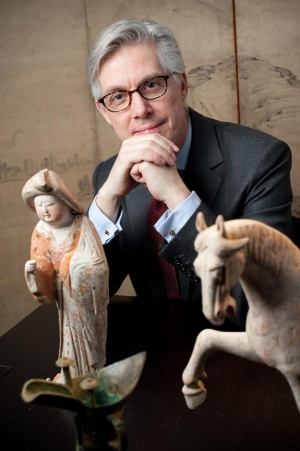
LONDON, ENGLAND – By now it is no secret that newly wealthy Chinese buyers are transforming the global market for art and antiques. Sotheby’s chief executive William Ruprecht recently told the Wall Street Journal that the Chinese are spending $4 billion a year on Chinese paintings alone - more than Sotheby’s and Christie’s combined annual sales of Impressionist, modern and contemporary art. Nearly all of the leading auction houses are seeking Mandarin-fluent staff.
But despite their assertive auction presence, Chinese buyers are scarce at the West’s leading art and antiques shows, a challenge for dealers looking to groom new collectors. That may be about to change. In late September, representatives from the European Fine Art Fair (TEFAF), organized each March in the Dutch city of Maastricht, made their first visit to China.
Led by TEFAF chairman Ben Janssens, the group hosted receptions for collectors in Beijing and Shanghai and were received by officials at the splendid Shanghai Museum. In Beijing, they visited the Palace Museum at the Forbidden City, the new National Museum of China at Tiananmen Square, and the Capital Museum, which showcases the imperial city’s storied past.
The friend-raising tour was part of a global campaign to market TEFAF, regarded by some as the world’s leading venue for traditional art and antiques. TEFAF, which celebrates its 25th anniversary in 2012, is hosting an event in another BRIC country, Brazil, in late October. Between December and February, TEFAF representatives will wine and dine their way through Milan, Munich, Lisbon, Paris, Luxemburg, Amsterdam and Brussels.
AFAnews.com recently spoke to Asian art dealer Ben Janssens from his gallery on London’s Jermyn Street, where his specialties include early Chinese pottery, porcelain, bronze and jade as well as later Ming and Qing dynasty objects.
AFAnews: What prompted TEFAF’s trip to China?
BJ: Over the past three years, TEFAF has welcomed groups of Chinese collectors, albeit in fairly limited numbers. We have been thinking about doing something in China but wanted to wait until the time was right. Until now, Chinese collectors have mainly been interested in Chinese art. That is beginning to shift, so it seemed right that we should go. Interestingly, Chinese museums are also beginning to look much more to the West. The Capital Museum is hosting “Van Gogh and the Amsterdam Impressionists.” An exhibition of Bulgari jewelry and “Art of the Enlightenment” - organized by the Berlin National Museum, the Dresden National Art Collection Museum and the Bavarian State Picture Galleries - are at the National Museum.
AFAnews: Who was in the TEFAF delegation?
BJ: It was really just me and our head of marketing, Titia Vellenga. We were assisted in China by two people, TEFAF representative Xiaoling Xu, and an American, Mike Bruhn. Mike has lived in China for 20 years. He was with Sotheby’s in Hong Kong and now has his own business based in Beijing and Shanghai. He organizes events and launches for Western brands and is quite involved in marketing various museums in China. We were also joined by a TEFAF exhibitor, Mark Schaffer of A La Vieille Russie in New York, who had concurrent business in China.
AFAnews: How many Chinese collectors are visiting TEFAF?
BJ: They mostly come in groups although a few Chinese collectors travel individually. We recently had a collecting circle from Nanjing and another from Shanghai. The visits are well organized. We help with travel planning and translators to make it easier for them. Many Chinese would like to visit the fair but the logistics are difficult. We have offered similar assistance for many years to groups all over the world.
AFAnews: Did TEFAF reach out to institutions or individuals?
BJ: The mission was really to target as many private collectors as possible. In Beijing, we hosted a reception and dinner for about fifty collectors at the residence of the Dutch ambassador. Some institutions were represented, as well. We approached our visit to Shanghai quite differently. We had a presentation at the Chinese Collectors Club, which limits its numbers. We tried to give them an impression of what the fair was like through an audio-visual presentation. Altogether, we met 120 collectors in Beijing and Shanghai. Many expressed their interest in coming to TEFAF Maastricht.
AFAnews: I understand that the group was hungry for facts and figures.
BJ: That’s typical for Chinese audiences. I was prepared for it. Some questions we can answer, such as what percent of our exhibitors are Asian art specialists (about ten percent). There are many things we can’t easily answer, such as what the sales turnover is at TEFAF.
AFAnews: Was the trip a success?
BJ: There is huge interest in the fair. We noticed that TEFAF is very much recognized as a brand and Chinese collectors do see us as such. There was some curiosity about whether we might mount a TEFAF fair in China.
AFAnews: Will you?
BJ: You never know. The idea would require much more exploration to make sure that it was the right step.
AFAnews: Does TEFAF host similar events in other parts of the world?
BJ: We adapt the formula to where we are. In most cases, invitations are extended by participants in our fair. So far we have had only one exhibitor from China, Meg Maggio of Pekin Fine Arts. She was in our Showcase. We have done events in South America and in European countries where there is not widespread awareness of TEFAF. We haven’t yet visited Russia or the Middle East.
AFAnews: Will TEFAF change to reflect the increasingly global nature of the art market?
BJ: I think it already has. Five years ago, when I became chairman, there wasn’t much Asian art at Maastricht. Now we have a comprehensive selection, including three dealers in Japanese art. Three years ago we introduced contemporary design. We try to be as responsive as we can to the general public.
AFAnews: Many dealers have had limited success selling to Chinese collectors. Why is that?
BJ: I think it has to do with what you sell. My focus is on early Chinese art and also Ming and Qing ceramics and for that there is definitely a clientele in China. But it’s not easy. You have to go there and be responsive. The approach is very different than what we are used to in Europe. You have to wait.
AFAnews: Is language the primary obstacle?
BJ: There was a very good reason why TEFAF decided to have a Chinese language site about three years ago. It is completely in Chinese. And for most dealers, the same thing goes. I have just produced a catalog with Chinese captions for my participation in Asia Week in London in November. The auction houses got onto this very early and have had the means to develop it. They definitely got the march on dealers but dealers are catching up. The Chinese market is now one that no one can afford to ignore.
Postscript
The Chinese market is indeed one that no one is ignoring, least not the Chinese.
In a follow-up exchange with AFAnews.com, TEFAF’s marketing chief Titia Vellenga remarked on the speed with which the Chinese art market is developing.
“In 2009, China became the third largest art market globally with a market share of 14%. In 2010, it overtook the second position of the UK that dropped from 27% to 22%, whereas the Chinese art market share in 2010 was 23%,” she said.
Others are also working to facilitate more East-West exchange. The mainland auction house, China Guardian, is opening offices in New York and London this fall. According to The Art Newspaper, it seeks to repatriate consignments of Chinese art but has not ruled out selling Western art, as well. And Hong Kong dealer Andy Hei hosted the seventh edition of Fine Art Asia from October 3-7 at the Hong Kong Convention Center. The fair, whose stated aim is to be “Asia’s Maastricht,” coincides with the Asian capital’s fall auctions. Among its ninety-plus exhibitors are Apter-Fredericks Ltd., a founding partner of London’s Masterpiece fair and his colleagues Berwald Oriental Art, M.D. Flacks, Michael Goedhuis, Geoffrey Diner Gallery, Nicholas Grindley and Carlton Hobbs. Unlike TEFAF, Fine Art Asia is unvetted.
Write to Laura Beach at This email address is being protected from spambots. You need JavaScript enabled to view it.
|
|
|
|
|